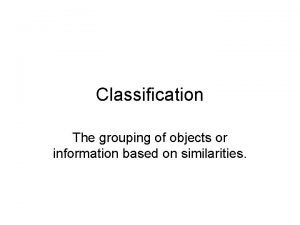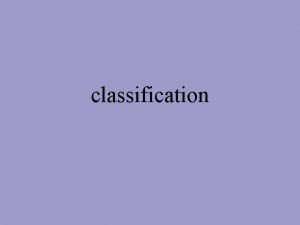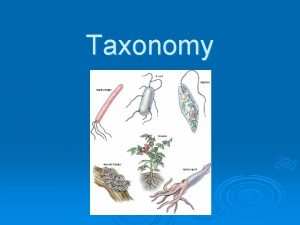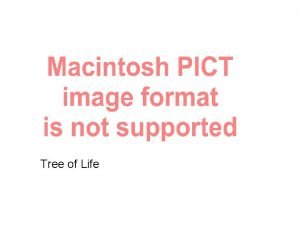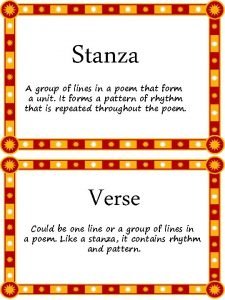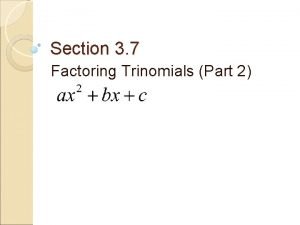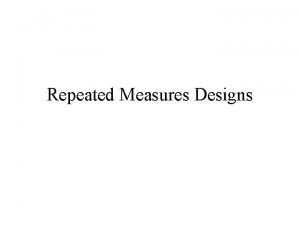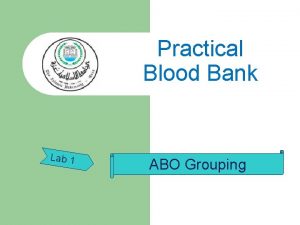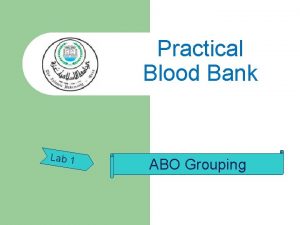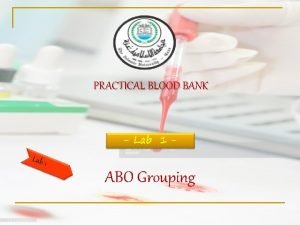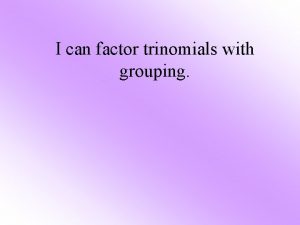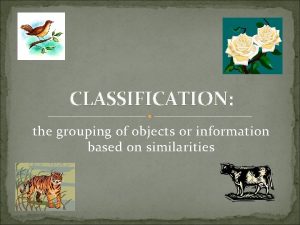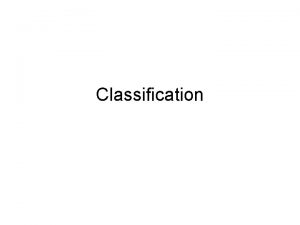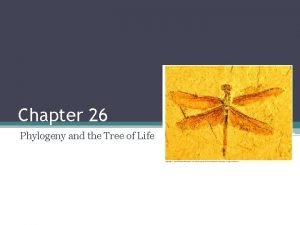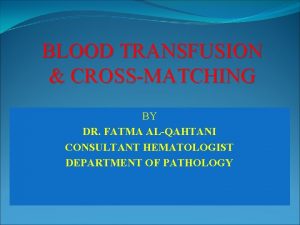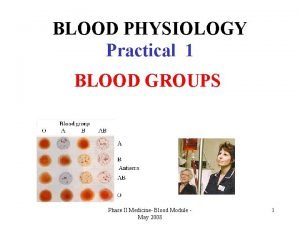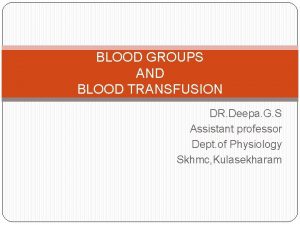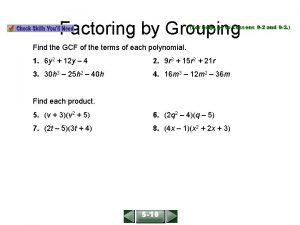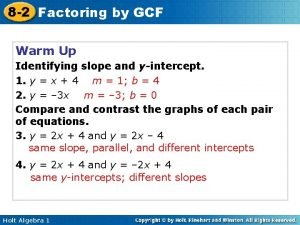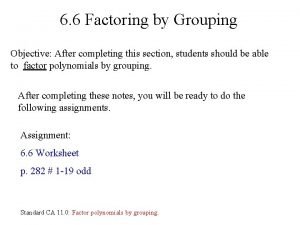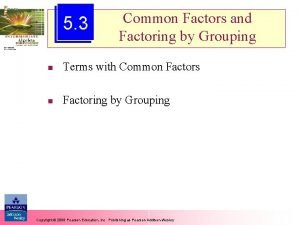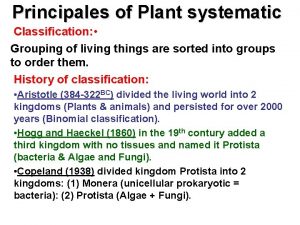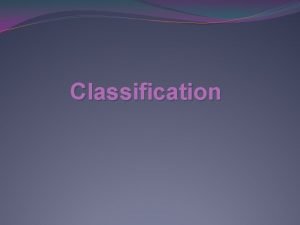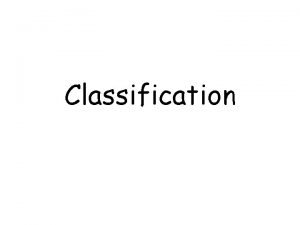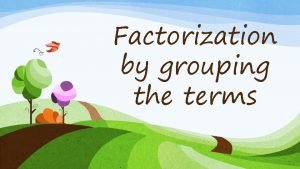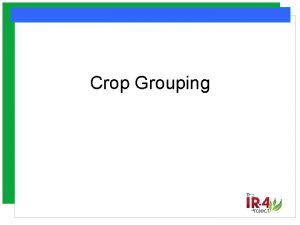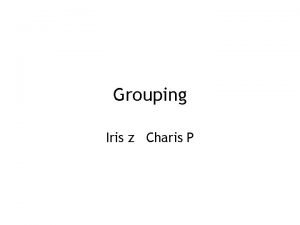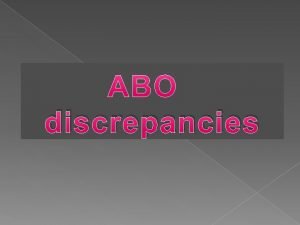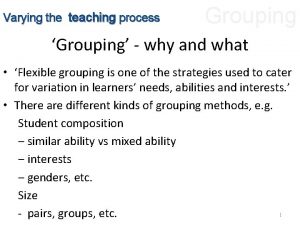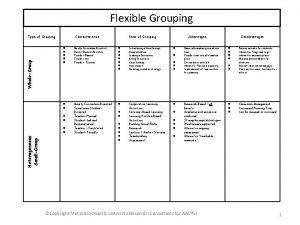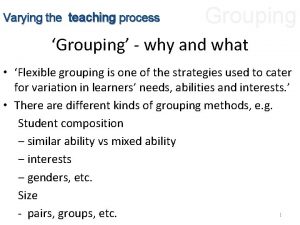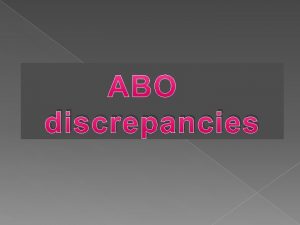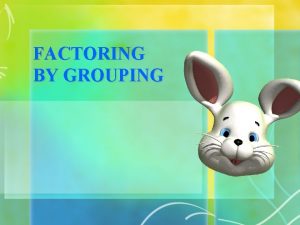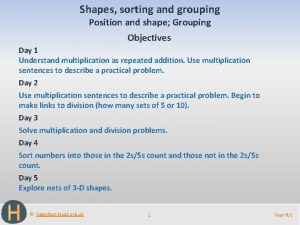Soil Classification Soil Classification Soil classification Systematic grouping






























- Slides: 30

Soil Classification

Soil Classification • Soil classification Systematic grouping and arrangement of soils into different groups or categories on the basis of their distinguished characteristics is known as soil classification. • Soil classification system All the rules and regulations that govern the grouping into different categories is known as soil classification system. • Soil taxonomy Soil classification system is known as soil taxonomy. Soil taxonomy is the branch of soil science which deals with discovering, characterizing, classifying and naming the soils as to understand the relationships between them and with the factors of environment.

Need for soil classification • Soil is a natural media capable to support plant growth. • A soil is a product of parent material have been changed over time by climate and living organisms and modified by topography. • Soils vary widely in their nature and properties depending upon soil forming factors. • For example the soils that have been developed from sand stone are sandy and inherently less productive compared to the soils developed from limestone. • Likewise, the properties of that developed on steep slope are entirely different from the soil developed on flat topography.

• Similarly, the nature and properties of soils farmed & developed in temperate region are quite different from the soils developed in tropical climate. • It indicates that some soils are naturally productive and respond well to different management practices while others are relatively less productive and respondent to cultural practices. • Likewise, some soils drain very rapidly and need frequent irrigation while others retain much water but require good aeration.

• In order to make profitable and sustainable use of soil we cannot handle all types of soils in the same way. • Therefore scientists, study these variations in nature and properties of soil and setup a classification system that recognize large number of soils each with distinguished characters. • The knowledge of kinds and properties of soil around the world is critical to humanity struggle for survival and well being. • A soil classification system is equally important if we want to use the knowledge of soil properties gained at one location to solve the problems at another location where similarly classed soils are found. • In short, soil classification system provides a base for efficient and sustainable use of soil on profitable basis.

Objectives of soil classification • Soil classification is important not only for scientific research in soil sciences themselves but also for social, economic, natural, cultural and technical sciences. • The main contribution of soil classification is to allow for defining off cluster of different soil characteristics relevant in space & time to the specific research needs in the respective field of sciences. • Soil classification plays a central role in categorizing the large body of information being assembled during soil survey. The main objectives of soil classification are: 1. To give an identity to soil to study their nature and properties precisely.

2. It serves as a frame work for organizing our knowledge of soils and provides the means of communication among scientists and between scientists and the users of the land. 3. To establish various groups and subgroups of soils in order to predict their behavior and identify their best uses and productivity. 4. To highlight and understand relationship among different classes to each other and to the environment. 5. To provide appropriate objects and units for research and experimentation.

6. To study the soil intelligently at different locations on the earth surface and to communicate information about genesis and characteristics of soil. 7. Classification provides a way to organize information regarding soil into a pattern so that we can recognize and use soil more efficiently and effectively.

Evolution of soil classification system • Soil taxonomy is a soil classification system. Throughout the history, humans have used some kind of system to name and classify the soil. • From the time, when crops were first cultivated the people observed some differences in soil with respect to their productivity. And they classified the soils as good soils and bad soils. • The early Chinese, Egyptian and Roman civilization, acknowledge the differences in soils as natural media for plant growth. • Such recognition is also common today as soils are recognized as good cotton soils, wheat, maize, and rice or sugarcane soils.

• The earliest documented attempt at formal classification of soils based on the productivity of the soils seemed to occur in china. • The Chinese system included 9 classes of soil based on the productivity of soils. The evidences suggested that Chinese soil classification system was used to impose taxes on the farmers based on the productivity of soils. • Later on, Roman scientist develops a classification system based on farming utility. This system was comprised of 9 classes and 21 subclasses and this system was designed for guidance to make decisions about the use and care of land for the production of food and fiber.

• In 1882 Russian Government deputed their scientist to design program for classification and mapping of soils as a basis for tax assessment. • These Russian scientists promoted the description of soils as natural bodies rather than considering soils simply as materials of weathered rocks. • They studied some relationships among climate, vegetation and soils. • They gave the idea of pedon from which data can be collected and compared. • The size of pedon varies from 1 -10 m 2 depending upon the variability in soils.

• But due to poor classification facilities, this idea could not be promoted to USA up to earlier parts of 20 th century. • In 1927 US department of agriculture used this idea of natural body and develop a classification scheme. This scheme was further improved in 1935 & 1938. • By the survey department in USA this classification scheme was named as soil taxonomy and it has been implemented in USA as well as 45 other countries since 1965. • This scheme is also followed in Pakistan.

Principles of soil taxonomy • Soil taxonomy is based on following principles: 1. Equity Each category in the system should provide a place for all soils in a landscape or have the capability to provide such a place without distortion of the system. 2. Transparency The categories of the system must have unambiguous definitions and clearly stated functions. Knowledgeable persons equipped with some information must arrive at the same classification.

3. Science based The system should not science based. This is ensured by adhering to logical scientific rules and minimizing the use of biases, popular feelings and traditional approaches. However, this historical information may be used but must be continually validated for its relevance and acceptance. 4. Architecture and linkage The designs of classification should facilitate its use in digital processing system, and where possible with easy linkage to other natural resource classification system.

5. Ecosystem links As soils are a component of any ecosystem, ecosystem parameters should be valid to use as criteria for defining categories particularly at higher categories. 6. Flexibility To serve its intended purpose and to reduce subjectivity (biasness) in application of the system, flexibility should not result in distortion of the system integrity.

Features of soil classification • It must be comprehensive i. e. it must be capable of accumulating all of the soil found in the country. • Class definition must be clear, vigorous and based on factual statements of soil properties. • Only those soil properties that are easy to measure and verifiable by others should be used as criteria for soil classification.

• Classification system must be well structured so that similarities and differences among soils can easily be understood. • Unique nomenclature should be employed which gives definite connotation of the major characteristics of soil e. g. vertisols.

Categories of soil taxonomy • A category of soil taxonomy is a set of classes that are defined approximately at the same level of generalization and that include all soils. • Soil properties that can be measured quantitatively are used in this classification system – they include: depth, moisture, temperature, texture, structure, cation exchange capacity, base saturation, clay mineralogy, organic matter content and salt content • Soil taxonomy has six categories these are from top to bottom 1. Order 2. Suborder 3. Great group 4. Sub group 5. Family 6. Series • The classification was originally developed by Guy Donald Smith, former director of the U. S. Department of Agriculture's soil survey investigations.

1. Order (the top hierarchical level) • This is the most generalized category of soil taxonomy. There are 12 soil orders. • These are differentiated on the basis of presence or absence of *diagnostic horizons or features that reflect soil forming processes. • (*Diagnostic horizons are those having specific soil characteristics that are indicative of certain classes of soils. Horizons that occur at surface are called epipedons and those below surface are called diagnostic subsurface horizons). • The names of the orders end with the suffix -sol. The criteria for the different soil orders include properties that reflect major differences in the genesis of soils.

• The soil properties are the consequences of a variety of process acting on parent material over time. • Distinction among soil orders help in understanding soils and remembering them on grand scale.

• Thus, distinguishing between the orders is based on the markers left by process that are dominant forces in shaping the characters of soil. • There are twelve soil orders. However, these orders are not only the possible orders in soil taxonomy. • The hierarchy is flexible and other adhoc orders may be defined to emphasize properties not considered in 12 orders.

• The orders are: • Alfisol – soils with aluminium and iron. They have horizons of clay accumulation, and form where there is enough moisture and warmth for at least three months of plant growth. They constitute 10% of soils worldwide. • Andisol – volcanic ash soils. They are young and very fertile. They cover 1% of the world's ice-free surface. • Aridisol – dry soils forming under desert conditions which have fewer than 90 consecutive days of moisture during the growing season and are nonleached. They include nearly 12% of soils on Earth. Soil formation is slow, and accumulated organic matter is scarce. They may have subsurface zones of caliche or duripan. Many aridisols have well-developed Bt horizons showing clay movement from past periods of greater moisture.

• Entisol – recently formed soils that lack well-developed horizons. Commonly found on unconsolidated river and beach sediments of sand clay or volcanic ash, some have an A horizon on top of bedrock. They are 18% of soils worldwide. • Gelisol – permafrost soils with permafrost within two metres of the surface or gelic materials and permafrost within one metre. They constitute 9% of soils worldwide. • Histosol – organic soils, formerly called bog soils, are 1% of soils worldwide. • Inceptisol – young soils. They have subsurface horizon formation but show little eluviation and illuviation. They constitute 15% of soils worldwide. • Mollisol – soft, deep, dark fertile soil formed in grasslands and some hardwood forests with very thick A horizons. They are 7% of soils worldwide.

• Oxisol – are heavily weathered, are rich in iron and aluminum oxides (sesquioxides) or kaolin but low in silica. They have only trace nutrients due to heavy tropical rainfall and high temperatures and low CEC of the remaining clays. They are 8% of soils worldwide. • Spodosol – acid soils with organic colloid layer complexed with iron and aluminium leached from a layer above. They are typical soils of coniferous and deciduous forests in cooler climates. They constitute 4% of soils worldwide. • Ultisol – acid soils in the humid tropics and subtropics, which are depleted in calcium, magnesium and potassium (important plant nutrients). They are highly weathered, but not as weathered as Oxisols. They make up 8% of the soil worldwide. • Vertisol – inverted soils. They are clay-rich and tend to swell when wet and shrink upon drying, often forming deep cracks into which surface layers can fall. They are difficult to farm or to construct roads and buildings due to their high expansion rate. They constitute 2% of soils worldwide.

2. Sub orders • A suborder category is the sub division of an order with in which genetic homogeneity is emphasized. • Soil characteristics used to distinguish sub orders with in orders vary from order to order. • However, soil moisture regimes, temperature regimes and soil properties derived from differences between soil moisture and temperature are considered important criteria to differentiate sub order within an order. • Sixty four suborders are currently recognized.

3. Great groups • It is sub division of suborder. There are more than three hundred great groups. • Soil within great group is identified by the kind of sequence of soil horizon. 4. Sub groups • It is the subdivision of great group. • In sub groups classes are identify on the basis of horizon nature and arrangement as well as soil temperature and moisture regimes.

• There are three kinds of sub groups, typic, inter grade and extra grade. i. Typic sub group • A typic subgroup represents the basic concept of great group from which it derives. ii. Inter grade sub group • Inter grade sub group contains soil of grade group but also have soil containing same properties and characters of another great groups. iii. Extra grade • Soil has properties that do not inter grade or match to any soil of known great group.

5. Family • A soil family is a group of soil with in a sub group that has similar physical and chemical properties of soil. • The principle characteristics used to differentiate Ø Soil texture, Ø Soil structure, Ø Soil mineralogy, Ø Soil temperature, Ø Soil cation exchange capacity, Ø Soil thickness, and Ø Presence of soil coatings, cracks or any other property which is important from the plant growth point of view.

6. Soil series • The series is the longest category in soil taxonomy. • Soil series are the sub division of soil family based upon relatively detailed properties of the pedon within the depth of control section. • The range of variability of differentiating characteristics is narrower than for families. • The properties such as the nature of horizons, which includes the mineralogy, texture, structure, rupture, resistance, moisture and temperature regimes and degree of horizon thickness contrast between horizon and the nature of horizon boundary.

Example of classification of a soil type Order: Entisols Suborder: Fluvents Great Group: Torrifluvents Subgroup: Typic Torrifluvents Family: Fine-loamy, mixed, superactive, calcareous, Typic Torrifluvents • Series: Jocity, Youngston. • • •
 Classification is the grouping of objects based on
Classification is the grouping of objects based on Taxonomy is the science of grouping and naming organisms
Taxonomy is the science of grouping and naming organisms Grouping objects or information based on similarities
Grouping objects or information based on similarities Living soil vs dead soil
Living soil vs dead soil What are the four spheres of the earth
What are the four spheres of the earth Are protists monophyletic
Are protists monophyletic Line vs stanza
Line vs stanza Factoring cross method
Factoring cross method Repeated-measures design
Repeated-measures design Forward typing slide method
Forward typing slide method Forward and reverse typing
Forward and reverse typing Gel card method blood grouping
Gel card method blood grouping Grouping tasks into department job specification
Grouping tasks into department job specification Factoring trinomials by grouping
Factoring trinomials by grouping Factoring by grouping definition
Factoring by grouping definition The grouping of objects or information based
The grouping of objects or information based Method of grouping organisms based on their similarities
Method of grouping organisms based on their similarities Factoring examples
Factoring examples A logical grouping of characters is a?
A logical grouping of characters is a? Monophyletic group
Monophyletic group Blood grouping and crossmatching
Blood grouping and crossmatching Cross factoring method
Cross factoring method Blood grouping and crossmatching
Blood grouping and crossmatching Blood grouping and crossmatching
Blood grouping and crossmatching Blood group physiology
Blood group physiology Blood transfusion groups
Blood transfusion groups Blood grouping and crossmatching
Blood grouping and crossmatching Algebra grouping
Algebra grouping 8-2 factoring by gcf
8-2 factoring by gcf Factor by grouping
Factor by grouping Factor by grouping examples
Factor by grouping examples
